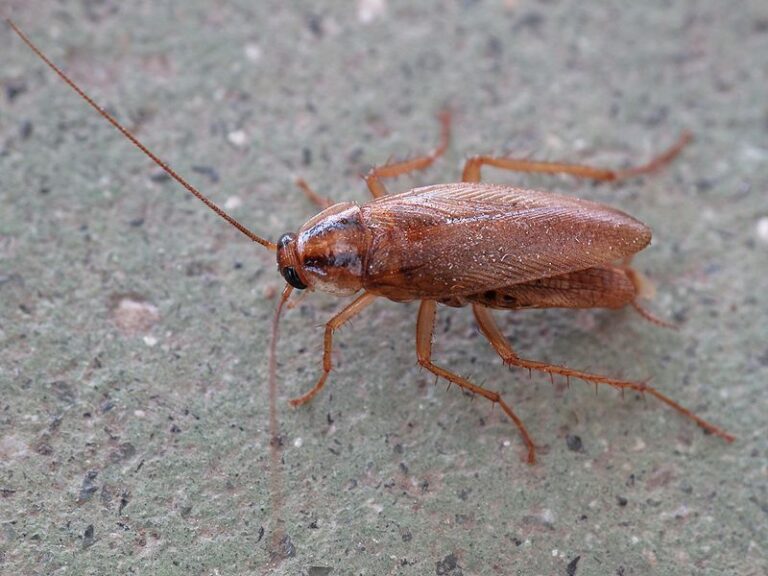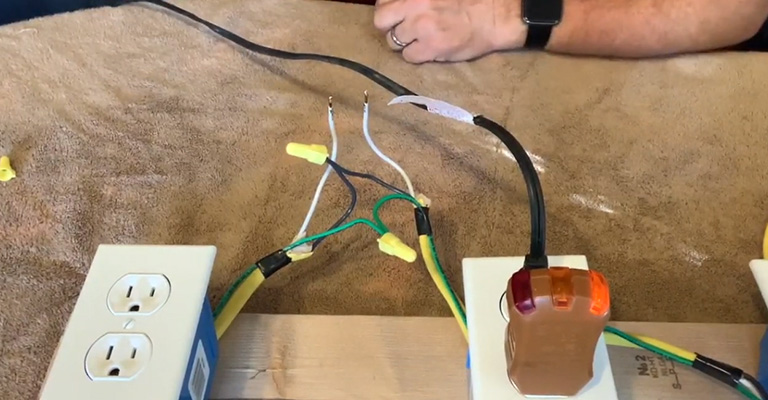How To Cut Concrete With A Reciprocating Saw?
A reciprocating saw is a handheld machine that can cut through wood, metal, masonry, and other materials. It’s a versatile tool that can be used for all sorts of jobs around the house.
These saws are useful for cutting through thick and tight materials like concrete. They are also useful for cutting pipes and other metal objects with ease. Wait a minute…concrete?
Yes. As long as you have the right blade, you can cut concrete using a reciprocating saw or Sawzall as you commonly know it.
If you want to utilize this powerful tool to its full potential, you should know a few things.
Can You Cut Concrete With A Sawzall?
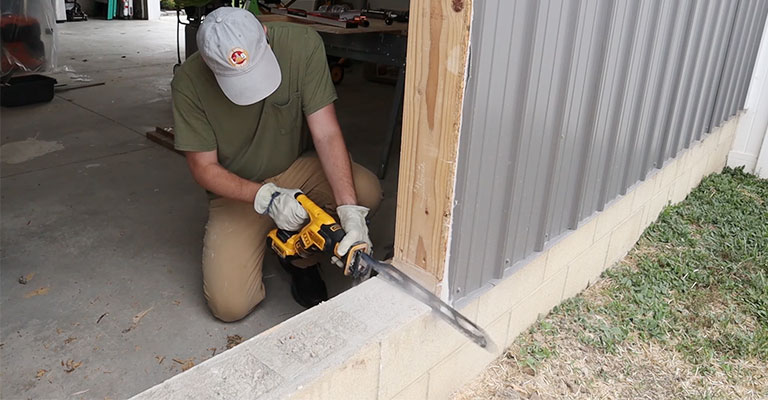
The density and hardness of concrete make it difficult to cut. Concrete’s durability and strength make it a fantastic building material.
To cut through it, you need a powerful saw and a specialized blade. In particular, if the slab, wall, or footing is thick. We use a heavy-duty concrete saw with a diamond blade and water supply to cut through solid concrete.
It reduces heat and dust by wetting the concrete as you cut it. If your reciprocating Sawzall has the right blade, you can cut concrete with it.
There are two types of Sawzall blades that cut through concrete: abrasive blades and toothed blades. The diamond or carbide grit coating on abrasive concrete blades makes it easier to grind through concrete.
The teeth on toothed concrete blades are very sharp and have a carbide coating that makes them tough enough to cut through solid concrete. A toothed concrete blade has about two teeth per inch and can easily cut solid concrete.
There is also a difference in the tooth shape, and extra-wide gaps separate the elongated teeth. This design prevents dust and debris from clogging the blade.
Is It Easy To Cut Concrete?
You don’t have to be a rocket scientist to cut concrete if you have the right tools and blades. Increasing slab thickness, however, increases the difficulty.
A reciprocating Sawzall blade will cut through thin slabs and cinder blocks relatively easily. However, in solid, dense concrete with lots of stones, it’s hard to get through. It is even difficult to cut thick slabs with a concrete saw.
You will need a bigger saw for thicker slabs. With a 36″ blade, large concrete saws are heavy and difficult to maneuver. The saw does all the work, even though it isn’t the easiest job. Almost any slab can be cut with a concrete saw with a new blade.
The use of water helps a lot. The process of dry-cutting concrete generates a lot of dust. In addition, blades are easily burned out. So, unless I’m cutting concrete inside, I almost always use water.
Using a shop vacuum is an alternative to water if you do not want to use it. The vacuum should be placed right beside the cut by a helper. As you cut, it will suck up a lot of dust. In order to control dust, this can be very helpful.
How To Cut Concrete With A Reciprocating Saw?
The right tool is crucial to cutting concrete properly. Here are the steps you need to follow to cut concrete like a pro.
1. Choosing The Right Blade

Choosing the right blades for your job is the first step. A reciprocating saw blade comes in many sizes and shapes, so don’t use a metal-cutting blade for cutting wood.
Not only will this slow you down, but it will also damage the blade. So, before you purchase anything, it’s best to know how much cutting you’ll need to do.
It makes no sense to buy a giant-sized Sawzall blade if you’re only going to use it to cut some plywood or drywall up. Blades are designed for different kinds of jobs.
2. Blade Size
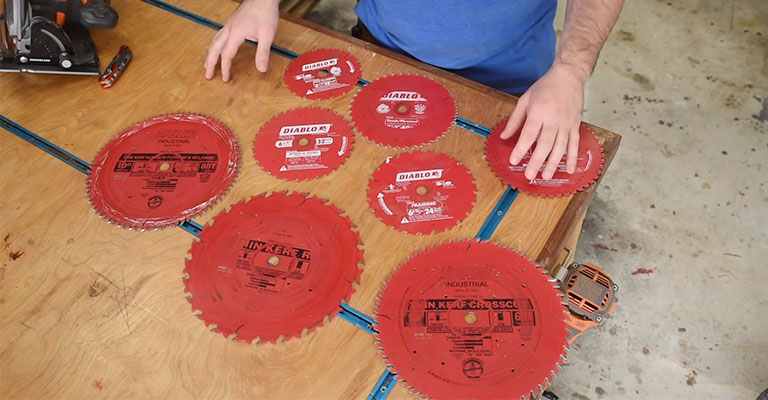
Different widths, lengths, and thicknesses of reciprocal saw blades are available for concrete cutting. A builder must determine the cut’s depth and shape before choosing the right size blade for a concrete project.
A blade that needs to cut through an entire concrete component, such as a block or slab, should have at least 2 inches more length than the concrete component to allow it to reciprocate on both sides freely.
The flexibility of long blades makes them more suitable for creating curves than short blades.
Which Sawzall Blade Is Best for Cutting Concrete?
The reciprocating Sawzall can be used to cut through concrete, but other tools are much more effective. For example, a concrete saw, a circular saw, or an angle grinder is much more efficient for cutting concrete than a circular saw.
Despite this, using a Sawzall to cut concrete has some advantages. Diamond blades are used in angle grinders and circular saws for cutting concrete. With a standard blade, you can reach a depth of about 4 inches.
Because a Sawzall blade is 9-12 inches long, it can cut through slabs much thicker. Sawzall blades with carbide teeth or grit are best for cutting concrete. They can cut through blocks and slabs of concrete due to their carbide coating.
It would be best if you started slowly to avoid the saw jumping around on you. Cutting a fine line will be easier if you do this. Using full power is possible once the blade is about 1/4″ into the concrete.
Cutting concrete blocks or thin slabs is best done with a reciprocating Sawzall blade. In thin concrete without a lot of stones, they work really well. Nevertheless, if the wall or footing was thick, I would use a concrete saw that had a water supply.
3. In Case Of Damage Or Wear, Replace The Blade
Blade sharpeners might be worth investing in if you frequently replace blades. You should get yourself a Sawzall blade sharpener if you’re having trouble keeping your blades sharp after just one use.
Changing the blade will save you time and money in the long run since you only need to take out the old one and replace it with the new one.
4. Maintain A Proper Grip On The Saw
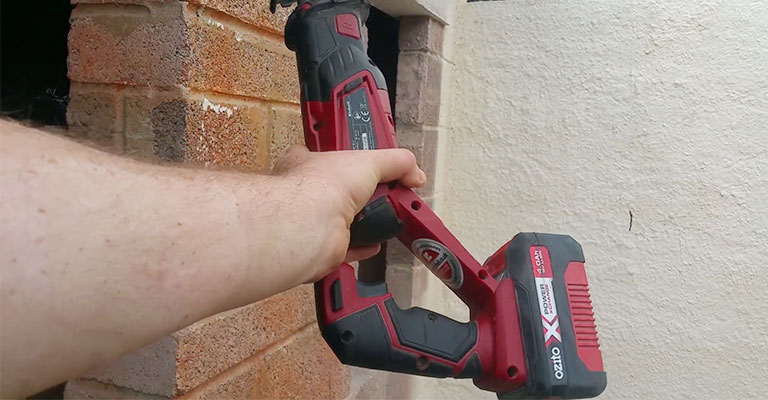
The handle of the saw should be held tightly on both sides. The handle can be made more comfortable by adding an over-molded grip or wrapping some rubber/foam around each part of it.
It is not uncommon for contractors to start their saw every five minutes only to find that they forgot to remove the battery.
6. Don’t Fight Against Materials That Have Already Been Cut
Make sure you don’t push too hard when cutting through previously cut materials. Your blade will either bend or break or get caught and flung back at you if you do so.
7. Start At The Bottom And Work Your Way Up
Starting from the bottom and slowly working your way up is the best way to cut through thick slabs of concrete.
Once you’ve cut away everything holding the slab together, you’ll prevent cracks or chips from running up to its top surface. Furthermore, this gives you an opportunity to stop if there are problems before proceeding.
8. Keeping The Area Clean After Use
Reciprocating saws should be cleaned after use, just as you would with any power tool. This is beneficial for both safety and blade longevity. Always unplug your blades before you do so and let them cool down before you do so.
9. Make Sure The Battery Is Removed
The Sawzall battery should be removed when it isn’t in use, or it should at least be unplugged when it isn’t. It is a good idea to leave your fully charged batteries in place while you walk away from them, so they can charge up while you’re out of the way.
Alternative Tools
Even though the long, thin blade of a reciprocal saw is often the best tool for the job, many other tools can be used to cut concrete easily. Angle grinders are the most commonly used concrete-cutting tool.
In contrast to reciprocal saws, angle grinders produce smoother cuts with less resistance, despite spinning abrasive circular blades.
Alternatively, masonry drill bits attached to hammer drills can be used to remove concrete quickly and easily. A drill bit can create an access hole for reciprocal saw blades even if it cannot complete the entire project.
Read more to learn about home improvement
Safety Tips
When working with a loud saw, always wear safety goggles, gloves, and ear muffs. To prevent accidental cuts or debris/dust from flying through the air, be sure to wear protective clothing – long sleeves and pants.
Most people make the mistake of applying too much force to the blade when cutting concrete and too little to the handle of their reciprocating saw. Unfortunately, when you use too much power when cutting, you’ll wear out your blade prematurely, leading to poor results.
Allow the blade and saw to cool frequently when cutting through thick materials or making multiple cuts. Make sure your work area is free of anyone else before beginning (and unplug your saw if you’re working alone). Also, check that no one is nearby that may be caught in the blade or fly-back.
You should never touch the tip of your blade after cutting through something – it will be very hot. Also, while cutting, never use any part of your body to push against something, as this could cause falling debris/dust/heat to burn your eyes, face, or hands.
If you are about to plug in the saw, ensure that both parts of the handle are tightly held by you and that the blade(s) are securely fastened.
The cord of a plugged-in saw should never be carried by its cord or pulled while cutting because it could damage the cord, battery, or even the tool.
Also, Read – Toe Kick Saw Alternative
Final Words
A Sawzall can cut through concrete, but it isn’t great for cutting through thick concrete structures. This is because a Sawzall blade must be longer than the concrete is thick, about 2 inches, in order to cut it.
The most common grit blade is 9 inches long, while the most common toothed blade is 12 inches long. However, this is not enough to cut through most slabs for thicker footings and walls.
Never try to use miter saw to cut concrete, they will break. But you can cut tile with it.

